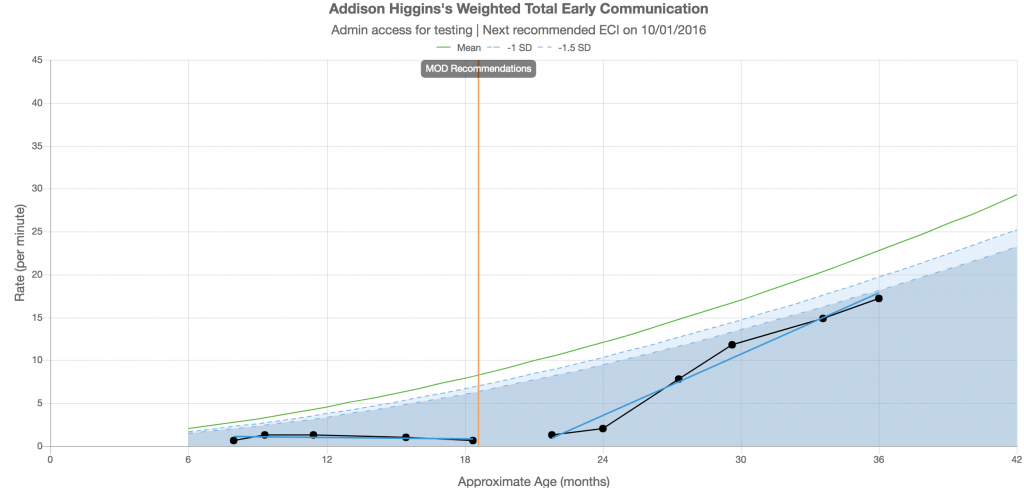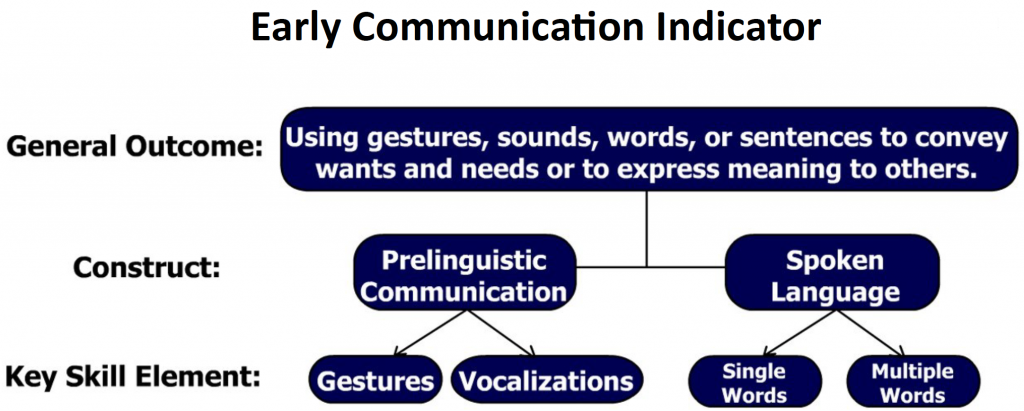The Early Communication Indicator (ECI)
 The Early Communication Indicator (ECI) is one means of checking children’s growth toward the important outcome of being able to express themselves through their gestures, vocalizations, words, and sentences.
The Early Communication Indicator (ECI) is one means of checking children’s growth toward the important outcome of being able to express themselves through their gestures, vocalizations, words, and sentences.
You can read more about IGDIs by reviewing our list of publications. To buy toys for administering the ECI, see our toys needed page. You can also find tips for IGDI administration including administering IGDIs remotely on our site.
The Early Communication Indicator (ECI) for children birth to age 3 is a sensitive, easy to administer measure of communication (e.g., Luze et al., 2001). The ECI is a brief, repeatable, play-based, observational measure of a child’s communicative performance during a 6-minute play period with a familiar adult. The play session is standardized around one of two toys – either the Fisher-Price House or Fisher-Price Barn.
- Four communicative behaviors, or Key Skill Elements selected and validated through research, make up the ECI’s total communication indicator: Gestures, Vocalizations, Single Words, and Multiple Words
- These skills were selected to represent the prelinguistic domain (Gestures and Vocalizations) and the spoken or signed language domain (Single and Multiple Words)
- The Total Weighted Communication score is derived by summing these four skills and giving additional ‘weight’ to each single word (x2) and multiple word (x3).
- The following key skill elements were not included because they did not add to the sensitivity of the ECI: Coordinated Attention, because of its low frequency of occurrence and difficulty obtaining inter-observer agreement, and Social Attention or eye contact, because it did not show growth over time.
ECI with English Language Learners
The ECI can also be used in non-English languages! Follow the standard protocol regardless of the child’s primary language, including sign language. For young children who are regularly exposed to multiple languages, the coder should be fluent in all languages in which the child communicates. The play partner should also be able to understand the target child’s primary language.

